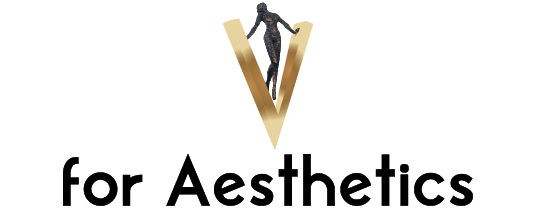What is a Septoplasty?
Septoplasty is a surgical procedure focused on correcting a deviated nasal septum, the wall between the two nasal passages. When the septum is significantly off-center or crooked, it can cause breathing difficulties, chronic sinus infections, and other problems. Septoplasty aims to straighten the nasal septum by trimming, repositioning, and replacing cartilage, bone or both. Unlike rhinoplasty, which is often performed for cosmetic reasons, septoplasty is a functional surgery designed to improve airflow through the nose.
The procedure is often recommended for individuals experiencing obstructed nasal breathing, frequent nosebleeds or sinus infections due to a deviated septum. Septoplasty can be performed alone or in conjunction with other procedures like rhinoplasty or turbinate reduction for comprehensive nasal airway correction.

Are You a Suitable Candidate for Septoplasty?
Ideal candidates for septoplasty are individuals who have a deviated septum that causes significant breathing difficulties, recurrent sinus infections or chronic nasal congestion. Candidates should be in good overall health and have realistic expectations about the results of the surgery. Septoplasty is particularly beneficial for those who have not experienced relief from symptoms with medication or other conservative treatments.
During the evaluation for septoplasty, a surgeon will assess the inside of the nose to determine the severity of the septal deviation and discuss potential surgical outcomes. It’s important for patients to fully disclose their medical history, including any nasal injuries, previous nasal surgeries, and current medications, to determine their suitability for septoplasty. Patients seeking improvement in nasal breathing and relief from symptoms associated with a deviated septum are typically good candidates for this procedure.
Benefits of Septoplasty?
Septoplasty offers numerous benefits, particularly for individuals suffering from the complications of a deviated septum. The primary advantage of this surgery is the improvement in nasal breathing. By straightening the septum, septoplasty can significantly reduce or eliminate symptoms like nasal congestion and difficulty breathing, leading to better overall respiratory function and improved sleep quality.
Another key benefit of septoplasty is the reduction in recurrent sinus infections and nosebleeds, common issues associated with a deviated septum. Patients often experience a general improvement in quality of life post-surgery, including fewer headaches and an enhanced ability to exercise or engage in physical activities without respiratory hindrance.
Unlike rhinoplasty, septoplasty is not performed for cosmetic reasons but for functional improvements, making it a crucial surgery for those affected by septal deviations. The procedure also has a relatively quick recovery time compared to other nasal surgeries, with most patients returning to normal activities within a week or two.
How common is Septoplasty?
Septoplasty is a frequently performed procedure within the field of plastic surgery, addressing the common issue of a deviated septum.
In the realm of plastic surgery, septoplasty is not just about correcting breathing difficulties; it’s often part of a comprehensive approach to enhancing facial aesthetics and function. The demand for septoplasty in plastic surgery reflects its effectiveness in improving both the aesthetic aspects of the nose and nasal airflow, making it a dual-benefit procedure. This surgical approach is particularly common in clinics like V for Aesthetics in Turkey, where a holistic perspective on facial harmony and function is emphasized. The popularity of septoplasty in the plastic surgery community underscores its significance as a procedure that effectively addresses both functional and aesthetic nasal concerns.
Is a septoplasty the same as rhinoplasty?
Septoplasty and rhinoplasty are distinct surgical procedures, each serving different purposes. Septoplasty is a functional surgery primarily focused on correcting a deviated septum to improve nasal breathing and alleviate symptoms related to sinus infections or nasal obstruction. The main goal of septoplasty is to straighten the nasal septum, which divides the nasal cavity, to enhance airflow and function.
On the other hand, rhinoplasty, commonly referred to as a nose job, is typically a cosmetic procedure aimed at altering the shape, size or overall appearance of the nose. Rhinoplasty can reshape the nose for aesthetic reasons or correct deformities resulting from injury. While rhinoplasty may sometimes involve adjustments to the nasal septum for cosmetic purposes, its primary focus is on the external appearance of the nose, unlike septoplasty which concentrates on correcting internal nasal structures for improved function.
In some cases, patients may undergo a combination of both procedures to address both functional and aesthetic concerns of the nose, often performed by plastic surgeons experienced in facial surgeries.
How to Prepare for a Septoplasty?
Preparing for a septoplasty, a surgical procedure to correct a deviated septum, involves several crucial steps. Firstly, it is important to have a comprehensive consultation with your surgeon. This discussion should include your medical history, any medications you’re taking, and your expectations for the surgery.
Your surgeon will likely advise you to stop taking certain medications, such as aspirin or ibuprofen, which can increase bleeding risk, for a period before the surgery. If you are a smoker, you will be encouraged to quit smoking well in advance of the procedure, as smoking can significantly slow down the healing process and increase the risk of complications.
Arranging for someone to drive you home after the surgery and to assist you during the first few days of recovery is also crucial. Preparing your home for a comfortable recovery is important. This includes setting up a resting area where you can sleep with your head elevated, which helps reduce swelling.
Following these preparation steps, along with any specific instructions given by your surgeon, will help ensure a smooth septoplasty procedure and recovery.
Septoplasty Surgical Process
The surgical process of septoplasty, designed to correct a deviated septum, involves several key steps. First, anesthesia is administered for the patient’s comfort. The type of anesthesia used, either general or local with sedation, depends on the individual case and surgeon’s preference.
Once the patient is under anesthesia, the surgeon makes an incision inside the nostrils to access the septum. This approach avoids any external scarring. The surgeon then carefully reshapes and repositions the septum, removing or altering portions of bone and cartilage to straighten the nasal passage. This may involve techniques such as deviated septum surgery or deviated nasal septum operation, depending on the extent of deviation.
After the septum is properly aligned, the incisions are closed with sutures. The entire septoplasty procedure typically takes about one to two hours. In some cases, additional procedures like septoturbinoplasty surgery may be combined with septoplasty to address related nasal issues.
Septoplasty: What to Expect
After undergoing septoplasty, patients can expect a recovery period where they may experience some common post-operative symptoms. Initially, there may be swelling and discomfort inside the nose. Nasal congestion is also common due to internal swelling, and patients may be advised to breathe through their mouth until this subsides.
Pain is generally mild to moderate and can be managed with prescribed pain relief medications. Some bleeding and nasal discharge is normal in the first few days, and patients are often instructed to avoid blowing their nose to allow proper healing.
Patients are usually able to return to work and normal activities within a week, but strenuous activities should be avoided for several weeks. The full results of the septoplasty, particularly improved breathing, may become more noticeable as swelling decreases over the weeks following the surgery.
Following the surgeon’s post-operative instructions is crucial for a smooth recovery and achieving the best results from the septoplasty surgery procedure.
Risks of Septoplasty
Like any surgical procedure, septoplasty carries certain risks, though it is generally considered safe. The risks associated with septoplasty include bleeding, infection, and adverse reactions to anesthesia. There is also a risk of nasal septum perforation, changes in the shape of the nose, and a persistent feeling of nasal blockage or stuffiness. In rare cases, patients may experience a decreased sense of smell or damage to surrounding structures, such as the nasal tissues or nerves.
It’s important for patients to discuss these potential risks with their surgeon before undergoing the procedure. Understanding these risks and how they are mitigated by the surgical team is crucial for informed consent. The expertise of the surgeon performing the deviated septum surgery or septoplasty surgical procedure plays a significant role in minimizing these risks and ensuring a successful outcome.
Maintaining Long-Term Results: Post-Septoplasty Care
Proper post-septoplasty care is essential for maintaining the long-term results of the surgery. After the procedure, patients should follow their surgeon’s instructions carefully to ensure optimal healing. This includes avoiding strenuous activities, not blowing the nose forcefully, and keeping the head elevated to reduce swelling.
Regular follow-up visits with the surgeon are crucial to monitor the healing process. Patients should also maintain good nasal hygiene as recommended by the surgeon, such as using saline sprays to keep the nasal passages moist.
To sustain the benefits of septoplasty, patients should avoid activities that could injure the nose. Additionally, addressing any allergies or environmental factors that could affect nasal health is important. By adhering to these post-operative care guidelines, patients can enjoy improved nasal function and breathing over the long term.
Results of the Septoplasty Permanent?
The results of septoplasty, aimed at correcting a deviated septum, are typically permanent. The primary objective of the surgery is to reposition and straighten the nasal septum, thereby improving airflow and reducing symptoms associated with a deviated septum, such as nasal congestion and difficulty breathing. Once the septum is corrected, these changes usually last a lifetime.
However, it’s important to note that while the structural corrections made during septoplasty are permanent, they do not prevent other nasal issues that may arise in the future, unrelated to the septum. Also, any subsequent trauma to the nose could potentially affect the results. Overall, patients who undergo septoplasty can generally expect long-lasting improvements in nasal function and breathing.
Is Septoplasty Painful?
Septoplasty is typically performed under anesthesia, so patients do not feel pain during the procedure. Postoperative discomfort is common, but it is generally mild to moderate and can be effectively managed with prescribed pain medication.
After the surgery, patients may experience sensations of stuffiness, pressure or mild discomfort in the nasal area. Swelling and bruising around the nose and under the eyes can also contribute to these sensations. These symptoms are usually temporary and diminish significantly during the first week of recovery.
It’s important for patients to follow their surgeon’s instructions for pain management and to communicate any concerns about pain or discomfort during follow-up visits. While septoplasty involves some postoperative discomfort, most patients find it manageable and feel that the benefits of improved breathing and nasal function outweigh the temporary discomfort.

Septoplasty Prices
When considering ‘septoplasty prices’, patients often seek an affordable yet quality solution for their deviated septum surgery. ‘Septoplasty prices’ can vary significantly based on factors such as the surgeon’s experience, the complexity of the procedure, and the geographical location of the clinic. It’s important for individuals looking into ‘septoplasty prices’ to ensure they are receiving comprehensive care that includes all aspects of the surgery, from pre-operative consultations to post-surgery follow-up.
Clinics like V for Aesthetics in Turkey offer competitive ‘septoplasty prices’, making high-quality deviated septum operations accessible to a broader range of patients. When researching ‘septoplasty prices’, patients should consider the long-term benefits of choosing a reputable clinic, ensuring they receive the best care and outcome for their investment.
Septoplasty in Turkey
The choice of undergoing ‘septoplasty in Turkey’ is increasingly popular among patients seeking high-quality medical care at reasonable costs. ‘Septoplasty in Turkey’ is renowned for combining expert surgical skills with state-of-the-art facilities, attracting both local and international patients. The increasing trend towards ‘septoplasty in Turkey’ is driven by the country’s experienced surgeons and the attractive ‘septoplasty prices’ offered without compromising the quality of care.
Clinics like V for Aesthetics have contributed to the reputation of ‘septoplasty in Turkey’, providing exceptional patient care and successful outcomes. Patients considering ‘septoplasty in Turkey’ can expect a thorough assessment, personalized treatment plans, and comprehensive post-operative care, making ‘septoplasty in Turkey’ a compelling choice for anyone looking to address issues related to a deviated septum.
Septoplasty Near Me
For those considering septoplasty, searching for ‘septoplasty near me’ is often the first step in finding a qualified clinic. The search for ‘septoplasty near me’ helps patients locate clinics that offer septoplasty services within a convenient distance, but it’s also crucial to consider the quality of care and expertise of the surgeons. In regions like Turkey, typing ‘septoplasty near me’ into search engines often leads to top-rated clinics like V for Aesthetics, known for their experienced surgeons and excellent patient care. When conducting a ‘septoplasty near me’ search, patients should assess the credentials, reviews, and success rates of the clinics and surgeons to ensure they choose the best possible option for their deviated septum surgery. Ultimately, the goal of ‘septoplasty near me’ searches is to find a combination of convenience, quality, and expert care.
For More Information
Please do not hesitate to contact us for more information on the subject.
